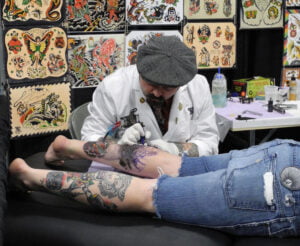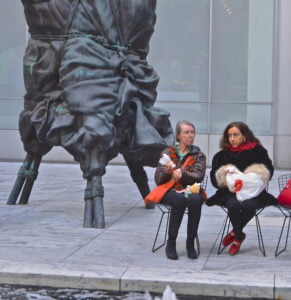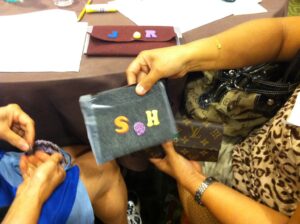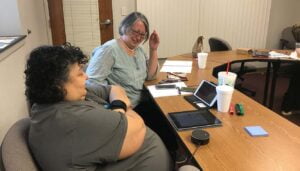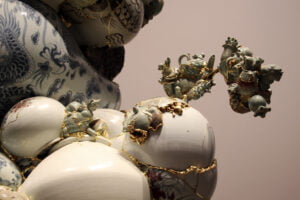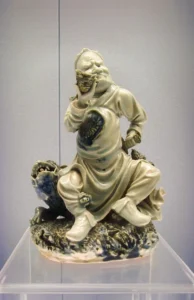The Factory Model of Education
Once upon a time, art schools were seen as bastions of free expression, where students could explore their unique voices and experiment with new ideas. Today, the reality is often far from this idyllic vision. Instead, we have art programs that resemble factories more than creative incubators. Students are processed through a rigid curriculum, with a heavy emphasis on technical skills and standardized assessments.
In this factory model, students learn to color within the lines—literally and figuratively. They are taught to replicate classical techniques and master traditional methods, all while adhering to a predetermined set of guidelines. This approach may produce technically skilled individuals, but it does little to foster the kind of innovative thinking that true artistry requires.
The Overemphasis on Technique
One of the primary criticisms of contemporary art education is its overemphasis on technical skills. While understanding the basics of drawing, painting, and sculpture is undoubtedly important, an excessive focus on technique can stifle creativity. Students spend countless hours perfecting their ability to render a still life or replicate a famous painting, but are rarely encouraged to develop their own style or voice.
As a result, many art students graduate with a portfolio full of technically impressive yet uninspired work. They can reproduce the great masters with precision, but struggle to create something original. This is the art world’s equivalent of training a robot to perform a task: efficient, precise, but devoid of true creativity.
Conceptual Art: The Other Extreme
In response to the critique of overly technical education, some art programs have swung to the other extreme, embracing conceptual art to the detriment of technical skill. Students are encouraged to prioritize ideas and concepts over execution, resulting in works that are intellectually stimulating but often lacking in visual appeal.
While conceptual art has its merits, an exclusive focus on theory and abstraction can leave students ill-equipped to translate their ideas into compelling visual forms. The result? Artists who can talk at length about the meaning behind their work but lack the technical skills to bring those ideas to life. It’s as if we’ve programmed our robots with advanced cognitive functions but forgotten to equip them with the necessary tools to build.
Standardization: The Creativity Killer
One of the most insidious threats to art education is the increasing pressure to conform to standardized testing and evaluation metrics. Schools are expected to meet specific benchmarks, which often translates to a more rigid curriculum designed to produce measurable outcomes. Creativity, with its unpredictable nature, doesn’t fit neatly into this framework.
Art teacher Maria Lopez laments, “We’re asked to quantify something that is inherently qualitative. How do you measure creativity? How do you grade an expression of emotion?” The focus on standardization can stifle the very qualities that make art unique: its subjectivity and its ability to challenge norms.
The Role of Technology
Technology has transformed many aspects of our lives, including art education. Digital tools and platforms have democratized art-making, giving students access to mediums like digital painting, 3D modeling, and virtual reality. While these innovations offer exciting possibilities, they also raise concerns about an over-reliance on technology.
Students may become adept at using software but lack a fundamental understanding of traditional techniques. This creates a generation of artists who are more like technicians, proficient in operating digital tools but disconnected from the tactile, hands-on experience of creating art. It’s as if we’ve upgraded our robots with the latest software but neglected to give them a soul.
The Lack of Individual Expression
At its core, art is about individual expression. Each artist has a unique voice, perspective, and story to tell. Effective art education should nurture these qualities, encouraging students to develop their personal style and vision. Unfortunately, the pressure to conform to certain standards can lead to a suppression of individuality.
Students may feel compelled to produce work that aligns with their teachers’ expectations or the prevailing trends, rather than exploring their own interests and ideas. This can result in a loss of authenticity, with students creating art that feels derivative or forced. It’s as if we’ve programmed our robots to follow a script, leaving no room for improvisation.
The Role of Educators
Educators play a crucial role in shaping the future of art. Great art teachers inspire their students, not just by imparting knowledge, but by fostering a love for the creative process. They act as mentors, guiding students through their artistic journey and encouraging them to push boundaries.
However, the demands of modern education systems can limit teachers’ ability to fulfill this role. With large class sizes, limited resources, and the constant pressure to meet standards, many art teachers find themselves overburdened and unable to provide the individual attention that students need.
The Future of Art Education
The future of art education lies in finding a balance between technical proficiency and creative freedom. Programs that integrate traditional skills with conceptual thinking and embrace new technologies without losing sight of the fundamentals are more likely to nurture well-rounded artists.
Collaborative projects, interdisciplinary approaches, and real-world applications of art can also enrich the educational experience. By connecting art to broader contexts, students can see the relevance of their work and find inspiration in diverse fields.
Conclusion: Producing Robots?
In the debate over whether art education is nurturing artists or producing robots, the current system seems skewed towards the latter. While technical skill and conceptual thinking are both important, an overemphasis on either can stifle true creativity. The pressures of standardization further compound the problem, creating an environment that is more about producing uniform outcomes than fostering individual expression.
To truly nurture the next generation of artists, we need to embrace a more holistic approach to art education. This means valuing creativity as much as technical skill, encouraging experimentation, and providing the support and resources that students need to find their own voices. Otherwise, we risk turning our art schools into factories, churning out robots who can replicate but not innovate.

